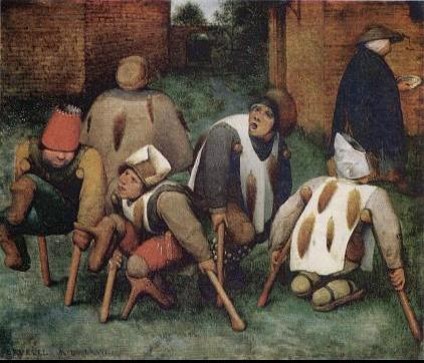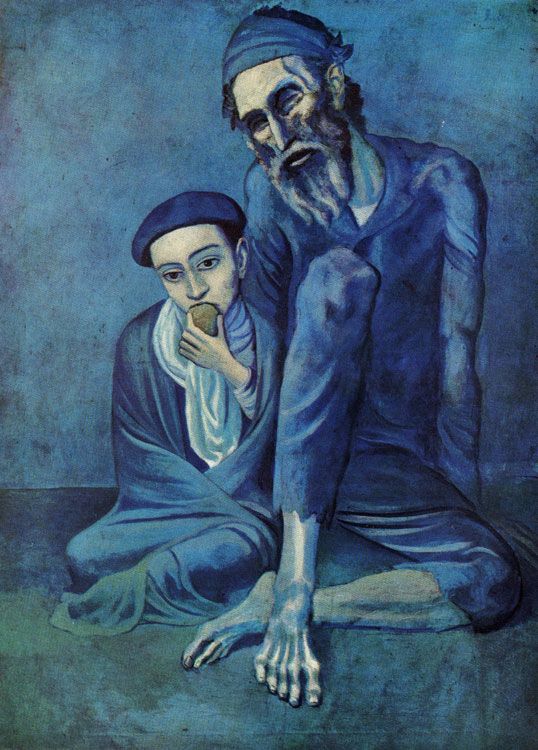Enemy, Cripple and Beggar: Shadows in the Hero's Path
In Enemy, Cripple, & Beggar, Erel Shalit provides new thoughts and views on the concepts of Hero and Shadow. This Fisher King Press publication elaborates on mythological and psychological images. Myths and fairy tales explored include Perseus and Andersen’s ‘The Cripple.’ You’ll also enjoy the psychological deciphering of Biblical stories such as Amalek—The Wicked Warrior, Samson—The Impoverished Sun, and Jacob & the Divine Adversary. With the recent discovery of The Gospel of Judas, Erel. Shalit also delves into the symbolic relationship between Jesus and Judas Iscariot to illustrate the hero-function’s inevitable need of a shadow.
The Hero dares to venture into the unknown, into the shadow of the unconscious, bringing us in touch with the darker aspects in our soul and in the world. In fact, it is the hero whom we send each night into the land of dreams to bring home the treasures of the unconscious. He, or no less she, will have to struggle with the Enemy that so often is mis-projected onto the detested Other, learn to care and attend to the Cripple who carries our crippling complexes and weaknesses, and develop respect for the shabby Beggar to whom we so often turn our backs—for it is the ‘beggar in need’ who holds the key to our inner Self.
Enemy, Cripple & Beggar can be comfortably read by an informed lay public interested in Analytical Psychology and by those interested in the interface between psychology and mythology, folklore, and religion.
Enemy, Cripple, & Beggar was a 2009 Gradiva Award Nominee for best theoretical book.



Preface
As mapped out by the title of this book, we shall follow in the footsteps of the hero on his (or her) path or way, and we shall face the shadows that the hero, whether in masculine or feminine dress, necessarily encounters.[1]
The concepts of hero and shadow – just like anima, animus and the self – are subject to discussion, examination and revisions in Jungian psychoanalytical circles. Thus, the heroes and the shadows of these pages give voice to commonly shared knowledge of just whom they are (which is the last thing a hero or a shadow would want to do!), as well as to my own individual understanding (more to the hero’s liking) – the latter often characterized rather by the need to search and explore than by certainty and conviction.
Were the hero to believe he already knows all there is to know, and if he would insist on standing on the firm ground of principles and conventions, then he would barely bother to respond to the call to adventure.[2] Our hero would then unheroically remain at home, comfortably seated like Archie Bunker in the confined and drowsy embrace of the armchair-ego. He would stay away from the unknown, unaware of moonlit nights, and intolerant of the shadow-carrying Other. “The usual person is more than content, he is even proud, to remain within the indicated bounds…,” says Campbell.[3] “The hero,” says Jung beautifully, “is the symbolical exponent of the movement of libido.”[4]
The hero who searches for new paths in his heart and in his soul often lets the swift feather of hints and hunches guide him forwards. Yet, the hero who sets out on his or her adventurous path also needs to be equipped – with courage to search beyond the boundaries of common ground; with respect for what was already found by those who walked there before him, e.g. the knowledge and the wisdom that our ancestors have gathered; and with humbleness towards the unknown ahead of him, particularly the future handed over to our descendants. He or she needs to carry, as well, a bag full of questions and concerns, curiosity and conflict, doubt and fear; “Every man hath the right to doubt his task, and to forsake it from time to time; but what he must not do is forget it.”[5]
The hero ventures into the shadow-land, far away from home-sweet-home, beyond the familiar security of our ego-boundaries. Or, rather, the shadow is not a land, it is an entire continent, with many different lands and landscapes: Fields and valleys, seas and forests, some quite recognizable, others remote and mysterious, some seemingly friendly and embracing, others hostile and intimidating. The forests may become increasingly dense and dark, “the primeval shadows [drawing] back into the forest,”[6] the sea so wild and stormy that it carries one away, “far from native lands,” to the point where one may contemplate “whether to cast myself out of the ship into the sea and perish there, or .. to endure and bide among the living.”[7]
Some of the folks in shadow-land are easily recognized as people we know; foes we cannot but loathe, but also friends we’d never believe that behind the surface we would stumble on such envy and greed, anger and dismay – theirs and ours. And there are warriors and the vicious, dwarfs and cripples, the homeless and vagabonds, and some of awe-inspiring stature.
The land of shadows holds both the chains and the treasure-house of our ancestors, as well as the prospects and the promises, the fears and anxieties and uncertainty about our offspring. It pertains to the shadows we cast onto our enemy so that we may fight him – yes, usually him – in order to gain a sense of a free and secure personal identity. And it is the crippling sense of complexes that we may try to dump on the dunghill, outside and away from the central city square and the walls of our ‘ego-state,’ only to be terrified as they stare back at us when we try to gain a moment’s rest. And there, further down the murky path, stands the beggar lurking in the misty shadow, as if faceless, without the social mask of the persona, as a guide to our Self.
[1] As Patricia Berry writes, “there is not a shadow but many (as there is not one conscious standpoint but many…” (Echo’s Subtle Body, p. 187f.).
[2] Joseph Campbell, The Hero with a Thousand Faces, p. 49ff.
[3] Ibid., p. 78.
[4] “On Psychic Energy,” The Structure and Dynamics of the Psyche, CW 8, par. 68.
[5] Paulo Coelho, The Fifth Mountain, p. 53.
[6] Aharon Appelfeld, Badenheim 1939, p. 1.
[7] Homer, The Odyssey, p. 92.

Cover painting by Susan Bostrom Wong
Enemy, Cripple and Beggar is an intensely moving book that speaks deeply to the psyche. Every time I read Enemy, Cripple and Beggar my psyche responds with wonderful dreams. There are so many important concepts in this book. I would like to discuss a few that I found particularly salient.
Enemy, Cripple and Beggar is devoted to exploring that critical period during individuation in which the individual must heroically confront his or her inner darkness, the shadow. The shadow is the dark part of the psyche that we disown in childhood as the ego develops. Integrating the shadow leads to renewal and rebirth. It is a daunting task undertaken by the heroic ego. As Erel Shalit states: "The hero is an archetypal image of that aspect of the ego that searches for renewal [125]. …The task of the hero is to wrestle himself out of collective consciousness, the ingrained norms and prevailing worldview, our neurotic defenses, those rites of the soul and rituals of the spirit that have fallen into ruins of obsessive litany and compulsive decree. The hero revolts against an ego that has stiffened in the grip of habits and conventions, an ego that has become empty behind the emperor's new clothes, whether within the personal psyche or that of society. The hero must go forth into the dark and venture into the unknown to redeem a barren soul, a forgotten myth or a lost feeling, and then return and bring it back into consciousness. And in his struggle with a corrupt collective consciousness, the hero must be equipped with integrity" (pp. 137-138).
Shalit writes: "Destruction of morality and humanity does not turn the rebel of the mind or the militant in the world into a hero. Psychologically, there is no rejuvenating heroism in projecting the shadow onto the Other, as does the fanatic, the fundamentalist and the terrorist" (p. 25). Projecting the shadow onto others is the natural response early in life. But later in life, projecting the shadow is the opposite of heroic. Re-owning projected shadow and integrating its contents is a lifelong task of individuation and a moral necessity.
Links to blog posts
Haruki Murakami – “The Meaning of Shadows”
Pythia Peay: The Psychological Hero
Enemy, Cripple, Beggar: Shadows in the Hero's Path is available on
Amazon, Fisher King Press, Barnes and Noble, Books-a-Million, Book Depository, and other book sellers.
























